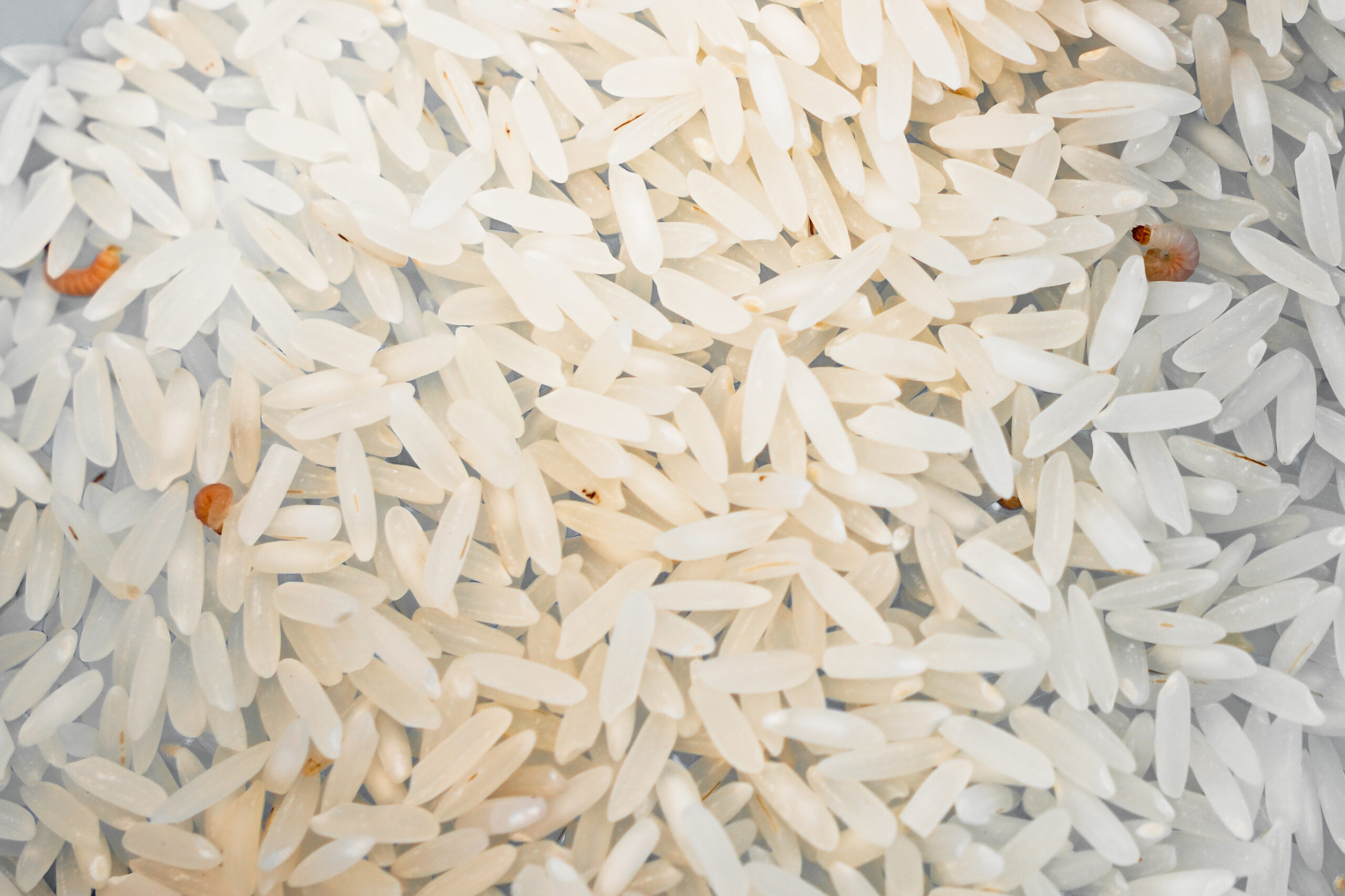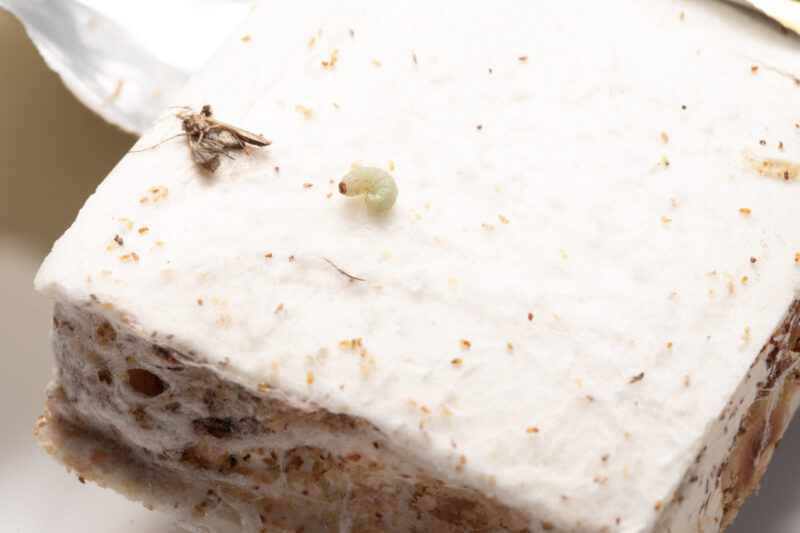If you’ve ever opened your pantry or kitchen cabinet and noticed a small, fluttering insect darting about, chances are you’ve come across a cabinet moth. Also known as pantry moths, these persistent pests can quickly turn your kitchen into a battleground and cause major frustration.
While cabinet moths don’t pose a direct health risk to humans, they can contaminate your food, leading to unnecessary waste and expenses. So, what exactly are cabinet moths, and how can you eliminate them? Let’s break it down.
What Are Cabinet Moths?
Cabinet moths, also known as pantry moths or Indian meal moths, are small, winged insects that often invade kitchens and food storage areas for grains, cereals, flour, nuts, and dried fruit.
These pests sneak into your home through infested food items from the store. A seemingly harmless bag of flour or box of cereal could already be carrying cabinet moth eggs. Once inside, they spread rapidly, especially if food items are left unsealed or stored in flimsy packaging.
A single moth can lay up to 400 eggs, and within just a few days, these eggs hatch into larvae. These larvae, small white caterpillars, are the culprits causing the real damage—they feed on your food and leave behind webs and droppings.

After a few weeks of feasting, the larvae spin cocoons and enter the pupal stage. About two weeks later, adult moths emerge, ready to start the cycle anew. Without intervention, this cycle can repeat several times a year, turning a minor annoyance into a full-blown infestation.
So, if you spot a couple of cabinet moths, you can bet many more are hiding in your food supplies.
Cabinet moths might not pose a direct threat like stinging insects, but they’re far from harmless. These pests can devastate your food supply, feeding on grains, flour, and other pantry staples. Their larvae chew through packaging and leave behind a gross mess of webbing, droppings, and even mold. Not only does this mean tossing out contaminated food, but it’s also a costly nuisance.
The problems don’t end with food waste. Cabinet moths reproduce quickly and spread fast. Once they find a food source, they’re not likely to vacate on their own. Acting swiftly is crucial to stopping the spread and reducing contamination and waste.
Signs of a Cabinet Moth Infestation
Catching a cabinet moth infestation early is crucial to preventing it from escalating. Watch for these key signs:
- Adult Moths: If you notice small moths flying around your pantry or kitchen, this is a clear sign of an infestation.
- Larvae or Caterpillars: Check your food items for small, white, or cream-colored larvae. These are the culprits doing most of the damage.
- Webbing: Cabinet moth larvae often leave behind silk webbing in food packages. If you see this in your grains, flour, or nuts, throw them out immediately.
- Holes in Packaging: Moth larvae can chew through cardboard and plastic packaging. If you find small holes or tears in your food containers, this is a sign you have some sort of pest infestation.
- Contaminated Food: If your flour, cereal, or grains have tiny black specks or visible larvae, they’re contaminated and should be discarded.
How to Get Rid of Cabinet Moths

So, you’ve discovered cabinet moths in your pantry — now what? Here’s a step-by-step guide to eliminating these pests and preventing them from returning:
- Inspect All Food Items: Go through your pantry and inspect all food items for signs of infestation. Pay special attention to grains, flour, nuts, and cereals. If you find any contaminated items, seal them in a plastic bag and dispose of them immediately.
- Clean Your Pantry Thoroughly: Empty your pantry or cabinet and wipe down all surfaces, including shelves, corners, and the inside of any containers. Use a mixture of soap and water or a diluted vinegar solution to remove any traces of moths, larvae, or eggs.
- Seal Unaffected Food Properly: For food that shows no signs of infestation, transfer it to airtight glass or hard plastic containers. This will prevent future infestations and keep your food safe from other pests.
- Use Moth Traps: You can purchase special pheromone traps designed to attract and capture adult cabinet moths. Place these traps in your pantry to help catch any lingering moths. While traps won’t solve the infestation on their own, they can be an effective part of your control plan.
- Call in the Professionals: If you’re dealing with an infestation, it’s best to contact a professional pest control company like proof. Pest Control. Our team knows how to effectively eliminate cabinet moths and prevent future infestations with long-lasting solutions.
Preventing Future Infestations
Once you’ve tackled your cabinet moth problem, you’ll want to prevent it from happening again. Here are some tips to keep these pests from returning:
- Inspect Your Groceries: Before bringing new food items into your home, inspect them for signs of contamination. Pay attention to any holes in packaging or visible larvae.
- Store Food Properly: Keep your pantry items in airtight containers. Glass, metal, or thick plastic containers are best, as moth larvae can chew through cardboard and thin plastic.
- Keep Your Pantry Clean: Regularly clean your pantry shelves and remove any crumbs or spilled food.
- Rotate Your Stock: Use older food items before newer ones to prevent food from sitting in your pantry for too long. Moths are more likely to infest older food items.
Let proof. Pest Control Handle Your Cabinet Moth Problem
Dealing with a cabinet moth infestation can be frustrating and overwhelming. Fortunately, proof. Pest Control is here to help. Our experts will assess the situation, eliminate the infestation, and provide long-term solutions to keep cabinet moths out of your home for good.
Don’t let these pests ruin your pantry. Contact proof. Pest Control today for help!

